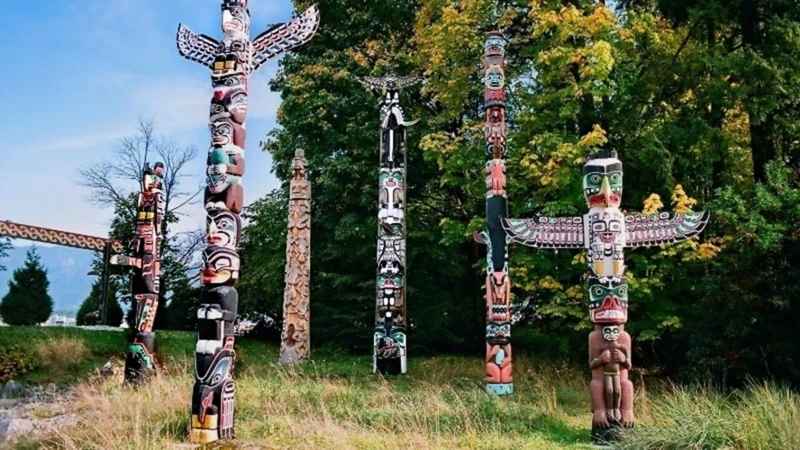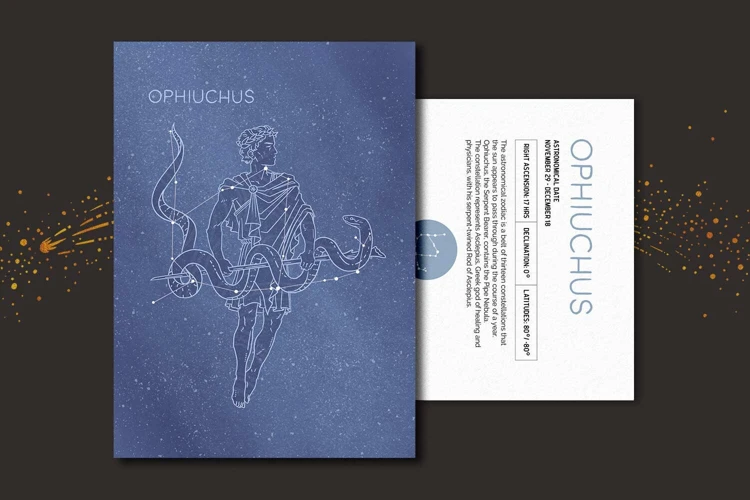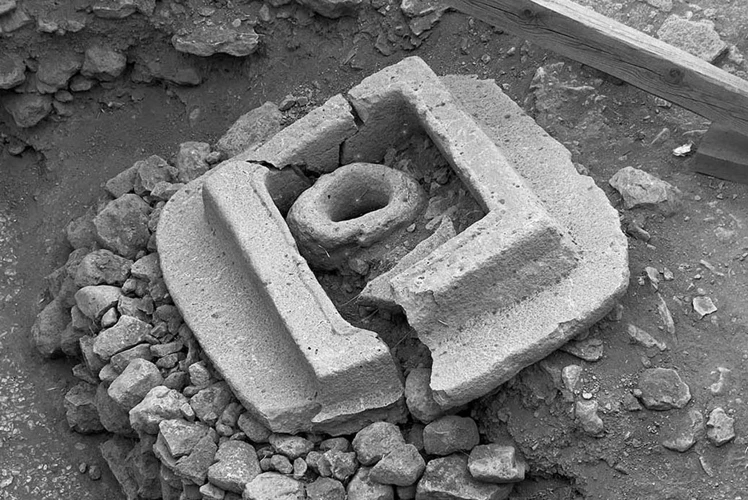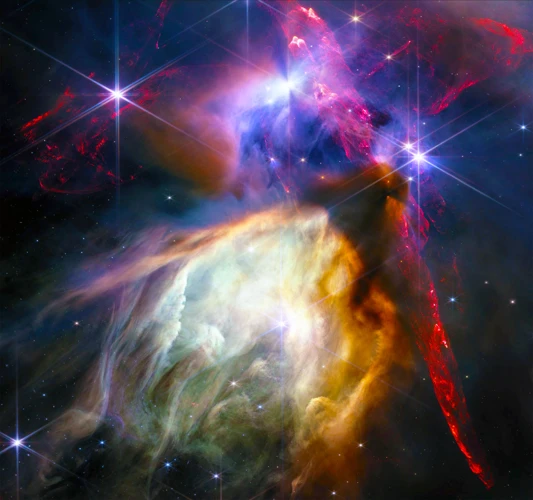Totem poles are fascinating and enigmatic structures that have captured the imagination of people around the world. These towering works of art are steeped in rich history and symbolism, each one telling a unique story. But what exactly are totem poles? Where do they come from? And what do they represent? In this article, we will delve into the purpose and symbolism of totem poles in indigenous cultures, exploring their origins, materials, construction, and the deep cultural significance they hold. Join us on this journey of discovery as we unravel the mysteries behind these captivating creations.
Contents
- History and Origins of Totem Poles
- Materials and Construction
- Symbolism and Iconography
- Purpose and Cultural Significance
- Styles and Regional Variations
- Preservation and Contemporary Adaptation
- Conclusion
-
Frequently Asked Questions
- What is the tallest totem pole ever carved?
- How long does it take to carve a totem pole?
- Are all totem poles the same?
- What kind of tools are used to carve a totem pole?
- What happens to old or damaged totem poles?
- Do all animals depicted on totem poles have specific meanings?
- Can anyone carve a totem pole?
- Why are some totem poles painted in vibrant colors?
- Why are totem poles often found in outdoor settings?
- Are totem poles only found in North America?
- References
-
Frequently Asked Questions
- 1. What is the significance of Totem Poles in Indigenous cultures?
- 2. How old are Totem Poles?
- 3. What materials are used to create Totem Poles?
- 4. How are Totem Poles carved?
- 5. What are the different symbols and iconography found on Totem Poles?
- 6. What is the purpose of Totem Poles in Indigenous cultures?
- 7. What are some unique features of Pacific Northwest Coast Totem Poles?
- 8. Are Totem Poles found in other Indigenous cultures?
- 9. How are Totem Poles preserved today?
- 10. How have Totem Poles been adapted in contemporary times?
- References
- Read More
History and Origins of Totem Poles

The history and origins of totem poles can be traced back to the indigenous cultures of North America, particularly the Pacific Northwest Coast. These impressive structures have been a prominent feature among indigenous communities for centuries, and their significance goes far beyond mere artistic expression. Totem poles serve as a visual representation of cultural heritage, storytelling, and spiritual beliefs. The exact origins of totem poles remain somewhat mysterious, but they are believed to have emerged in the late 18th century. The origins of totem poles can be linked to the indigenous peoples’ close relationship with nature and the importance of ancestral connections. Some theories suggest that totem poles were influenced by the First Nations of British Columbia, while others propose an origin in the Haida and Tlingit peoples of the Pacific Northwest Coast. These fascinating monuments reflect the rich tapestry of indigenous history and serve as a testament to the creativity and ingenuity of these cultures. From their origins to the present day, totem poles continue to be an integral part of indigenous identity and a source of pride for communities.
Materials and Construction

Totem poles are not only a testament to the artistic skills of indigenous cultures, but also to their resourcefulness in utilizing materials from their surroundings. Traditionally, totem poles were carved from towering cedar trees, which were abundant in the Pacific Northwest region. Cedar wood was preferred for its durability and resistance to decay, ensuring the longevity of the totem pole. The process of constructing a totem pole was meticulous and required skilled artisans. First, the cedar log was carefully selected, often with consideration for its height and width. Then, the outer bark was stripped away using tools such as adzes and chisels. The carver would then refine the shape of the pole, using techniques passed down through generations. Intricate designs and symbols were meticulously carved into the surface, each representing a unique story or ancestral lineage. The final step involved painting the totem pole with natural pigments derived from plants and minerals. The result was a magnificent and awe-inspiring structure that stood as a testament to the craftsmanship and cultural heritage of the indigenous peoples.
Traditional Materials Used
Traditional totem poles are crafted using a variety of materials found in the natural environment. Each material holds symbolic significance and adds to the overall meaning of the totem pole. The most commonly used material is cedar wood, which is abundant in the Pacific Northwest region and valued for its durability and workability. Cedar wood is highly resistant to decay and can withstand the harsh elements, making it ideal for outdoor installations. Other types of wood, such as spruce and pine, may also be used depending on the availability and cultural preferences. In addition to wood, totem poles may incorporate other materials like animal skins, shells, feathers, and natural dyes. These materials are carefully chosen to represent specific animals, spiritual beings, or cultural elements. The use of natural materials not only showcases the resourcefulness of indigenous communities but also reflects their deep connection to the land and the importance of sustainability. By using materials sourced from the environment, totem poles capture the essence of nature and honor the ancestral traditions that have been passed down through generations.
Process of Carving and Creation
The process of carving and creating totem poles is a meticulous and intricate art form that requires skill, patience, and deep cultural understanding. Traditionally, totem poles were carved from large cedar tree trunks, chosen for their durability and abundance in the Pacific Northwest Coast region. The first step in the process is selecting the right tree, which involves ceremonies to honor the tree’s spirit and seek permission for its use. Once the tree is felled, it is carefully stripped of its bark and left to dry for several years to prevent warping and cracking. The actual carving process begins with the rough shaping of the pole using adzes, chisels, and knives. However, before the carving can proceed, the totem pole design must be meticulously planned and agreed upon by the community. Each carving on the totem pole carries significant meaning and symbolism, representing ancestral lineage, supernatural beings, and important stories. Throughout the carving process, different members of the community may contribute their skills and expertise, with experienced carvers leading the way. The final step involves painting the completed totem pole with vibrant colors, highlighting the intricate details and bringing the carvings to life. The entire process of carving and creating a totem pole is a labor-intensive and collaborative effort, reflecting the deep cultural significance and respect for ancestral traditions. To learn more about the secret talents of Ophiuchus celebrities, click here.
Symbolism and Iconography
![]()
Symbolism and iconography play a central role in the art of totem poles, where each intricate carving holds deep meaning and significance. These symbols serve as a visual language through which indigenous cultures express their beliefs, stories, and connections to the spiritual realm. Totem poles often represent ancestry and lineages, using figures to depict family histories and relationships. They also incorporate spiritual and supernatural symbolism, showcasing mythical creatures and supernatural beings believed to have protective or guiding powers. Animals, both real and mythical, are commonly found on totem poles, each carrying its own symbolism derived from indigenous legends and traditions. These symbols and iconography serve as a powerful means of conveying cultural heritage and spiritual beliefs, allowing future generations to connect with their roots. The totem pole’s intricate carvings and the symbolism they embody serve as a testament to the profound depth and complexity of indigenous cultures. (source: /exploring-symbolic-representation-ophiuchus-mythology/)
Representations of Ancestry and Lineages
Representations of ancestry and lineages play a significant role in the symbolism depicted on totem poles. These majestic structures serve as a visual record of a community’s history and genealogy, preserving and honoring the legacies of past generations. Each totem pole carries the stories and achievements of the ancestors, acting as a family tree or lineage marker. The figures carved onto the totem pole often represent specific individuals or clans, portraying their unique characteristics and achievements. The placement of these figures on the totem pole is also significant, with higher positions denoting greater importance or seniority within the lineage. One figure that frequently appears on totem poles is the “crest,” a creature that is believed to be a significant ancestor or guardian spirit of the clan. These figures symbolize the strong connection between the present community and its ancestral roots, serving as reminders of the wisdom, knowledge, and traditions passed down through generations. By preserving and celebrating ancestry and lineages, totem poles contribute to the cultural identity and pride of indigenous communities, ensuring that their rich history is acknowledged and cherished for years to come.
Spiritual and Supernatural Symbolism
The spiritual and supernatural symbolism depicted in totem poles holds deep significance within indigenous cultures. Each intricate carving and design serves as a representation of the spiritual beliefs and connections to the supernatural world. The spiritual symbolism portrayed in totem poles often includes depictions of ancestral spirits, revered animals, and mythical creatures. These elements embody the interwoven relationship between the physical and spiritual realms. Ancestors are often represented as guardians or protectors, symbolizing the spiritual guidance and wisdom passed down through generations. Animals hold spiritual significance, representing traits and characteristics that are admired, such as the strength of a bear or the wisdom of an owl. Mythical creatures, like thunderbirds or sea serpents, embody supernatural powers and play a role in the mythology and oral traditions of indigenous cultures. These symbols serve as a reminder of the significant interplay between the seen and unseen worlds, as well as the spiritual connection that indigenous communities hold with the natural environment. The spiritual and supernatural symbolism within totem poles is a testament to the deeply rooted spiritual beliefs and practices of indigenous cultures. To delve further into the mysterious world of symbolism, you can explore the ruling planet and its impact on personal traits.
Depiction of Animals and Mythical Creatures
The depiction of animals and mythical creatures holds great significance in the intricate carvings found on totem poles. These representations are often a reflection of the spiritual beliefs and mythologies of the indigenous cultures. Animals, in particular, are commonly depicted on totem poles, each possessing its own symbolism and meaning. For example, the bear may represent strength, courage, and leadership, while the eagle symbolizes power, wisdom, and spiritual connection. Wolves are often associated with loyalty and family, while ravens are believed to be messengers and bringers of knowledge. These animal figures are intricately carved and often embellished with vibrant colors, capturing the essence and spirit of the creature they represent.
In addition to animals, totem poles also feature mythical creatures that play a significant role in indigenous folklore. These creatures, such as Thunderbirds and Serpents, are often depicted with intricate details, showcasing the skilled craftsmanship of the carvers. These mythological beings are believed to possess supernatural powers and are revered for their abilities to protect, guide, and communicate with the spiritual realm. Their presence on totem poles serves as a reminder of the deep spiritual connection indigenous cultures have with the natural world and the belief in the interplay between humans and these mythical creatures.
The depiction of animals and mythical creatures on totem poles not only adds visual intrigue but also serves as a powerful representation of cultural identity and spiritual beliefs. Each carving tells a story, passing down ancestral knowledge and serving as a reminder of the interconnectedness between humans, animals, and the spiritual realm. Understanding the symbolism behind these depictions allows us to gain a deeper appreciation for the intricate artistry and cultural significance of totem poles.
Purpose and Cultural Significance

The totem poles hold immense purpose and cultural significance within indigenous communities. These majestic structures serve as a means of religious and ritualistic expression, connecting individuals to their ancestors and the spiritual realm. Totem poles also play a crucial role in storytelling and preserving oral traditions, as they visually represent the history and lineage of clans and tribes. Through intricate carvings and symbolic imagery, totem poles depict important narratives and convey a sense of identity, pride, and community. They are physical embodiments of cultural heritage, serving as reminders of the past and guides for the future generations. The totem poles’ cultural significance extends beyond their physical presence, representing a profound spiritual and cultural connection to the indigenous people. They are a testament to the resilience and artistic brilliance of these communities, preserving their traditions and values for generations to come.
Religious and Ritualistic Functions
Religious and ritualistic functions hold a significant place in the purpose of totem poles within indigenous cultures. These majestic structures often served as important spiritual focal points, embodying the connection between the physical and spiritual worlds. Totem poles were believed to possess a sacred power and were often erected during religious ceremonies and rituals. They acted as gateways to the spirit realm, enabling communication with ancestors and supernatural entities. In ceremonies such as potlatches, which were elaborate feasts held to commemorate important events and statuses, totem poles would be prominently displayed to symbolize the wealth and prestige of the host. The symbolism depicted on the totem poles played a crucial role in conveying specific religious messages and spiritual beliefs. Each figure carved on the totem pole represented a different deity, ancestral spirit, or mythological creature, and they were revered as guardians and protectors. The rituals and ceremonies associated with totem poles were an integral part of maintaining cultural traditions and spiritual practices, ensuring the continuity of indigenous cultures and strengthening community bonds. These religious and ritualistic functions of totem poles served to honor the past, celebrate the present, and shape the future of indigenous communities.
Storytelling and Oral Traditions
Storytelling and oral traditions play a significant role in the purpose and cultural significance of totem poles. These towering structures serve as visual narratives, depicting stories passed down through generations. Totem poles act as a medium for preserving and sharing the history, legends, and teachings of indigenous communities. Through intricate carvings and symbolic representations, the totem poles tell tales of ancestors, supernatural beings, and important events. The stories conveyed by totem poles may include creation myths, clan histories, or significant encounters with spirits or animals. The oral traditions associated with totem poles involve the passing down of these stories from elders to younger generations, ensuring that the knowledge and wisdom of the past are not lost. These stories transcend time and serve as a way to connect with the cultural heritage and ancestral roots of indigenous communities. The totem poles themselves act as visual reminders of the stories and serve as focal points during storytelling sessions or ceremonial gatherings. By immersing themselves in these tales, individuals gain a deeper understanding of their identity, values, and place within the community. Storytelling through totem poles keeps the stories alive, fostering a sense of unity and passing on cultural knowledge to future generations. (Note: No relevant anchor found for internal linking)
Styles and Regional Variations

Styles and regional variations in totem poles offer fascinating insights into the diverse indigenous cultures that create them. The Pacific Northwest Coast is renowned for its distinctive totem pole styles, characterized by intricate carvings, vibrant colors, and towering heights. Each tribe within this region has its own unique artistic traditions and design elements, allowing for distinct visual representations. For example, the Kwakwaka’wakw people often incorporate elaborate and detailed figures of animals, while the Haida people focus on bold, stylized forms with a powerful and dynamic presence. Additionally, the Tlingit tribe is known for its use of crest symbols, representing specific family lineages and their associated stories. It is important to acknowledge that totem poles are not exclusive to the Pacific Northwest Coast. Other indigenous cultures, such as the Tsimshian, Nuu-chah-nulth, and Salish, also have their own distinct styles and regional variations. Each unique style reflects the cultural practices, histories, and mythologies of the indigenous groups, enriching the tapestry of totem pole artistry and heritage.
Distinct Features of Pacific Northwest Coast Totem Poles
Distinct Features of Pacific Northwest Coast Totem Poles:
1. Height and Size: Pacific Northwest Coast totem poles are known for their impressive height, often reaching up to 40 feet or more. These towering structures stand as testaments to the skill and craftsmanship of the indigenous artists who create them.
2. Multiple Figures: One distinctive feature of Pacific Northwest Coast totem poles is the presence of multiple figures stacked on top of each other. These figures can include animals, humans, and supernatural beings, each with its own symbolic meaning.
3. Animal Depictions: Animals play a significant role in the iconography of Pacific Northwest Coast totem poles. Commonly depicted animals include bears, eagles, ravens, wolves, and whales. Each animal holds its own spiritual significance and represents different qualities or characteristics.
4. Crest Figures: Crest figures are prominent elements of Pacific Northwest Coast totem poles. These figures represent the primary ancestry or lineage of a particular family or clan. They can be identified by their distinctive features, such as the beak of a raven or the dorsal fin of a killer whale.
5. Richly Carved Details: The intricate carving on Pacific Northwest Coast totem poles is another distinguishing feature. Artists meticulously carve intricate designs, textures, and patterns onto the surface of the pole, showcasing their skill and attention to detail.
6. Bold Colors: Totem poles of the Pacific Northwest Coast are often adorned with vibrant colors, including red, black, and green. These colors not only enhance the visual appeal of the poles but also hold symbolic significance in indigenous cultures.
7. Narrative Elements: Pacific Northwest Coast totem poles are renowned for their storytelling nature. Many poles depict specific stories, legends, or historical events that hold deep cultural importance. These narratives are passed down through generations, preserving the oral traditions of indigenous communities.
Pacific Northwest Coast totem poles are not just static sculptures; they serve as powerful symbols of cultural identity and spiritual beliefs. Through their distinctive features and artistry, these totem poles continue to captivate and inspire people around the world.
Other Indigenous Cultures with Totem-like Structures
Other indigenous cultures around the world have also created structures similar to totem poles, demonstrating the universality of the human need for symbolic representations. In the Americas, the indigenous peoples of the Southwest, such as the Hopi and Zuni, have carved wooden kachina dolls that bear resemblance to totem poles. These dolls serve as representations of spiritual beings and ancestors, much like totem poles. In Africa, the Makonde people of Tanzania and Mozambique create intricately carved wooden sculptures known as “Ujamaa” or “Family Trees.” These sculptures depict interconnected human figures stacked upon each other, mirroring the vertical structure of totem poles. The Ainu people of Japan also have their own version of totem poles called “Iyomante,” which are large wooden carvings. These structures serve as guardians and are an integral part of their cultural ceremonies. While the specific designs and cultural meanings may vary, the presence of totem-like structures across different indigenous cultures speaks to the shared human fascination with honoring and commemorating ancestors and spirits. These symbolic representations embody the cultural values and beliefs of these diverse communities, connecting them with their past and present. Discovering the similarities and differences in these totem-like structures allows us to appreciate the stunning array of indigenous art and heritage throughout the world.
Preservation and Contemporary Adaptation

Preserving the rich cultural heritage associated with totem poles is of utmost importance to indigenous communities. These intricate and monumental structures are susceptible to decay and natural wear over time. Efforts to ensure their preservation involve various methods and initiatives. Many communities have established cultural centers and museums where totem poles are carefully maintained and displayed. Conservation teams work tirelessly to protect these ancient artifacts, employing techniques such as cleaning, stabilizing, and treating the wood to prevent further deterioration. Additionally, education programs are implemented to raise awareness about the historical and cultural significance of totem poles. This helps to foster appreciation and respect for these works of art both within indigenous communities and the wider public. In recent years, there has also been a contemporary adaptation of totem pole art. Modern artists, including indigenous individuals and non-indigenous enthusiasts, create new totem poles using traditional methods and materials. These contemporary totem poles often incorporate themes that reflect contemporary issues, combining tradition with innovation. This adaptation ensures that the art form continues to evolve and stay relevant in today’s world. By preserving and adapting totem poles, indigenous cultures maintain a connection to their heritage while also showcasing their vibrant artistic expressions to a wider audience.
Conclusion

In conclusion, totem poles hold immense cultural, historical, and spiritual significance in indigenous communities. These magnificent structures have a long and rich history, originating from the indigenous cultures of North America, particularly the Pacific Northwest Coast. Totem poles serve as a visual representation of ancestral connections, storytelling, and spiritual beliefs, encapsulating the collective heritage and identity of indigenous peoples. The construction of totem poles involves intricate carving and often utilizes traditional materials, showcasing the artistic talents and craftsmanship of the indigenous communities. Over time, these monumental symbols have become recognized worldwide for their captivating beauty and cultural depth. While the exact origins of totem poles may remain somewhat elusive, their impact and importance are undeniable. Today, efforts are being made to preserve and adapt these cultural treasures to modern times, ensuring that their legacy and cultural significance endure for generations to come. The beauty and symbolism of totem poles continue to captivate and inspire, reminding us of the rich and diverse cultures that deserve our respect and appreciation.
Frequently Asked Questions

What is the tallest totem pole ever carved?
The tallest totem pole ever carved stands at a staggering height of 173 feet (52.7 meters). This magnificent totem pole, known as the “World’s Tallest Totem Pole,” can be found in Alert Bay, British Columbia, Canada.
How long does it take to carve a totem pole?
The time it takes to carve a totem pole can vary depending on its size and complexity. On average, it can take several months to several years to complete a totem pole, with the larger and more intricate ones requiring more time and effort.
Are all totem poles the same?
No, totem poles can vary greatly in their styles, symbols, and stories. Each indigenous culture has its own unique traditions and artistic techniques, resulting in a wide range of variations in the design and meaning of totem poles.
What kind of tools are used to carve a totem pole?
Carving a totem pole requires a variety of tools, including adzes, chisels, gouges, and knives. These tools are used to shape the wood and create intricate details, and the carvers often have their own preferred set of tools.
What happens to old or damaged totem poles?
Old or damaged totem poles are typically taken down and replaced with new ones. However, efforts are being made to preserve and restore ancient totem poles through conservation and restoration projects, ensuring their historical and cultural significance is maintained.
Do all animals depicted on totem poles have specific meanings?
Yes, each animal depicted on a totem pole holds a specific meaning and symbolism. Animals are often chosen based on their characteristics, spiritual significance, or connection to ancestral stories and beliefs.
Can anyone carve a totem pole?
Traditionally, totem pole carving was a skill passed down from generation to generation within indigenous communities. While anyone can attempt to carve a totem pole, it is important to respect and understand the cultural significance behind this art form.
Why are some totem poles painted in vibrant colors?
The vibrant colors painted on totem poles serve to enhance the overall visual impact and storytelling. Each color used can hold its own symbolic meaning, representing elements such as family clans, spiritual entities, or natural forces.
Why are totem poles often found in outdoor settings?
Totem poles are often found in outdoor settings as they were originally created to be seen and admired by the community. Placing them in prominent outdoor locations allows people to appreciate the totem poles’ grandeur and easily connect with their cultural significance.
Are totem poles only found in North America?
No, while totem poles have become synonymous with indigenous cultures of the North American Pacific Northwest, similar structures can be found in other parts of the world. For example, indigenous cultures in Alaska, Siberia, and parts of Asia also have their own versions of totem-like poles.
References
Frequently Asked Questions

1. What is the significance of Totem Poles in Indigenous cultures?
Totem poles hold great cultural, spiritual, and historical significance in Indigenous cultures. They serve as powerful symbols of ancestry, lineage, and tribal affiliations, often depicting stories, legends, and spiritual beliefs.
2. How old are Totem Poles?
The art of totem pole carving has been practiced for centuries, and some totem poles are believed to be over a hundred years old. The exact age of each totem pole varies depending on factors such as preservation, restoration, and regional practices.
3. What materials are used to create Totem Poles?
Traditionally, totem poles are made from red cedar logs, which are highly valued for their durability and resistance to decay. Other materials such as paint, shells, and feathers are often used for decorative purposes.
4. How are Totem Poles carved?
Totem poles are carved using a combination of hand tools and modern power tools. The process involves carefully shaping the wood, creating intricate designs, and adding finishing touches such as painting and details.
5. What are the different symbols and iconography found on Totem Poles?
Totem poles feature a wide range of symbols and iconography, including representations of animals, mythical creatures, ancestral figures, spiritual beings, and elements from Indigenous folklore and mythology.
6. What is the purpose of Totem Poles in Indigenous cultures?
Totem poles serve various purposes in Indigenous cultures, including religious and ritualistic functions, storytelling, honoring ancestors, conveying status within the community, and preserving cultural traditions.
7. What are some unique features of Pacific Northwest Coast Totem Poles?
Pacific Northwest Coast Totem Poles are known for their distinctive characteristics, such as the use of intricate and highly detailed carvings, vibrant colors, and the incorporation of traditional crest figures that represent specific families or clans.
8. Are Totem Poles found in other Indigenous cultures?
While Totem Poles are commonly associated with the Indigenous cultures of the Pacific Northwest Coast, similar pole-like structures can be found in other Indigenous cultures around the world, such as the Maori culture in New Zealand and the Tlingit culture in Alaska.
9. How are Totem Poles preserved today?
Totem poles are preserved through various methods, including regular maintenance, restoration efforts, and the use of protective coatings to prevent wood decay. Museums and cultural institutions also play a vital role in preserving and showcasing these cultural artifacts.
10. How have Totem Poles been adapted in contemporary times?
Totem poles have evolved and adapted in contemporary times, with artists incorporating new materials and techniques while still honoring the traditional craftsmanship. They continue to be celebrated as powerful symbols of Indigenous identity and cultural resilience.
References
- Totem pole | Purpose, Animal Meanings, & Facts
- The History and Significance of Totem Poles
- What is the meaning behind totem poles?






